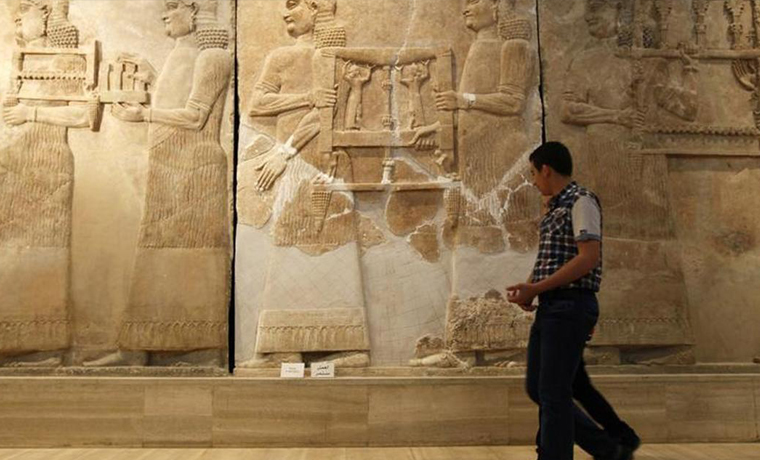Logos
58534 Logos, or as a binary system (58534) Logos-Zoe, is a trans-Neptunian object and binary system from the classical Kuiper belt. Logos was discovered on 4 February 1997, and its, companion, Zoe, was discovered on 17 November 2001.
Prehistoric cave art suggests ancient use of complex astronomy.
Some of the world's oldest cave paintings have revealed how ancient people had relatively advanced knowledge of astronomy. Animal symbols represent star constellations in the night sky, and are used to mark dates and events such as comet strikes, analysis from the University of Edinburgh suggests.
Saturn (time, observation, analysis system) sextile Typhon (ceremonies conducted in caves). Amycus (pictographs and petroglyphs, descent into the underworld (use of caves or kivas)) quincunx Altjira (remote viewing). Mercury (reason, speaking, writing, education, scientific (analysis)) conjunct Jupiter (education, higher learning) sextile Makemake (data collection to support a doctrine or cause, cave ceremonies) sextile Logos (use of natural order and law to describe and define life (perhaps as far back as 40,000 years ago, humans kept track of time using knowledge of how the position of the stars slowly changes over thousands of years)) square Aphidas (out of body, remotive viewing) quincunx Albion (archetypes).
The artworks, at sites across Europe, are not simply depictions of wild animals, as was previously thought. Instead, the animal symbols represent star constellations in the night sky, and are used to represent dates and mark events such as comet strikes, analysis suggests.
They reveal that, perhaps as far back as 40,000 years ago, humans kept track of time using knowledge of how the position of the stars slowly changes over thousands of years.
At Johns Hopkins, clergy try mind-altering drugs for scientific research. Photograph: Fredrik Skold/Alamy
Moses saw a burning bush. Paul saw Jesus on the road to Damascus. St. Teresa had ecstatic visions. When psychologist William Richards looks at religion, he sees mystical experiences everywhere. The same sort of experiences, he reasons, that come from mind-altering drugs.
Mercury (knowledge through reason, mental, analytical, scientific) trine Uranus (adventuresome, higher mind, higher octave of Mercury). Venus (impressionable, cooperative) square Psyche (insight, psychic impressionability) opposite Saturn (caution, restraint, seriousness, experience, observation) square Borasisi (setting one's rules of soulful communication and cosmic law). Sun (men, self-consciousness) trine Huya (religious or spiritual ritual, focused, dedicated, attentive) sextile Logos (sense of one's connection to all that Is, thought, reason, data, statistics and their use) sextile Makemake (data collection to support a doctrine or cause) trine Salacia (able to work with the unseen).
"There are — it's so hard to put this into language — sacred eternal experiences that the human being is capable of having. They seem to be at the origin of most religions," he said. "What we call the eternal seems incredibly real."
In the Hopkins and NYU study, two dozen clergy — including priests, pastors and rabbis — are taking controlled doses of psilocybin, the drug found in psychedelic mushrooms, under the watchful eye of scientists.
Babylonians used geometry beyond their time — study (Reuters)
Ancient Babylonian astronomers were way ahead of their time, using sophisticated geometric techniques that until now had been considered an achievement of medieval European scholars.
Amycus (monuments, commandments (as in carved in stone), pictographs and petroglyphs (wedge-shaped ancient Babylonian cuneiform script)) square Elatus (writing spiritual treatises) square Logos (thought, reason, data, statistics and their use (Babylonian astronomers produced tables with computed positions of the planets)).
That is the finding of a study published on Thursday (local time) that analysed four clay tablets dating from 350BC to 50BC featuring the wedge-shaped ancient Babylonian cuneiform script describing how to track the planet Jupiter's path across the sky.
Babylonian astronomers produced tables with computed positions of the planets, Ossendrijver said.
They provided positions needed for making horoscopes ordered by clients, and they also held the view that everything on Earth from river levels to market prices, for example grain, and weather — is connected to the motion of the planets.
A curious orangutan appears to laugh hysterically when a zoo visitor performs a disappearing magic trick for him using a paper coffee cup. Filmed at Barcelona Zoo
An Orangutan has been seen sharing a giant giggle after being shown a magic trick in a zoo. A man holds a polystyrene cup up to the glass of the monkey's enclosure, and shows him putting what seems like an un-ripened chestnut inside. He then proceeds to put a lid on the cup, shake it and place it back in front of the glass.
Sun (play, laughter, sociability) trine Sila-Nunam (land animals, regard for animals). Mercury (thought processes, trickster) square Logos (thought, reason, belief that humans are superior because of reasoning abilities).
When he opens the lid and the chestnut is gone from the cup, the previously unimpressed but interested monkey takes a second to register the trick, then throws his arms in the air and falls over laughing, rolling around in straw.
Discovery
1997 CQ29/58534 Logos is a small Kuiper-belt object, more specifically a cubewano, notable for having a comparatively large satellite named Zoe. In the Gnostic tradition, Logos and Zoe are a paired emanation of the deity, and part of its creation myth.
Logos is a binary with the components of comparable size orbiting the barycentre on a moderately elliptical orbit. Discovery date February 4, 1997. After the discovery, it received the provisional designation S/2001 (58534) 1. Once confirmed it was officially named (58534) Logos. Logos' companion was discovered on 17 November 2001








